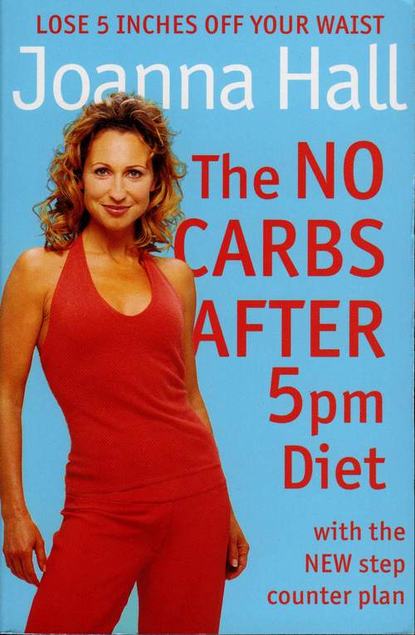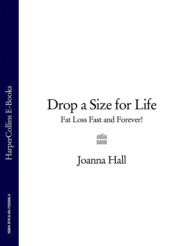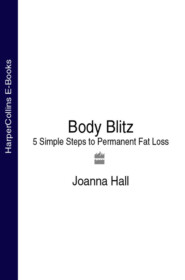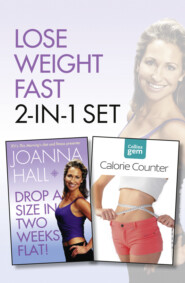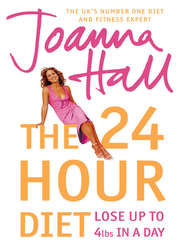По всем вопросам обращайтесь на: info@litportal.ru
(©) 2003-2024.
✖
The No Carbs after 5pm Diet: With the new step counter plan
Автор
Год написания книги
2018
Настройки чтения
Размер шрифта
Высота строк
Поля
Read through these medical conditions. If you suffer from any of them, tick whether you want them to improve or worsen. If you don’t have these conditions, tick whether you would like to increase or decrease your risk of developing them.
I appreciate that no one wants their health to get worse. Despite this, some people refuse to face up to the impact their lifestyle is having on their health. I have found this chart useful with clients, serving to give them a wake-up call.
HOW MOTIVATED ARE YOU TO CHANGE?
Look at the side of the box you’ve ticked and then take action. If you’ve ticked any of the columns on the left, give this book to someone else because this diet is about you getting healthier, losing weight and feeling better about yourself. If you want to do something about this then read on. We’ve got some work to do, but I’m here to help – so let’s get going!
BODY MEASUREMENTS
Before you start my 28-day programme you will need to take the following measurements:
Your weight
Your waist measurement
Your navel measurement (around the midriff level with your belly button)
Record these measurements on days 1, 7, 14, 21 and 28 of the plan in the chart overleaf.
You may also want to take additional body measurements, such as your chest, hips and thighs, so you can track your progress. Many of my clients have found this very motivating, as you will see your body change shape elsewhere too! Use the chart below to record these additional measurements. I suggest you record them on days 1 and 28 only as it’s likely that changes will be slower here, although your clothes will most definitely feel more comfortable as you progress on the diet.
Over the 28 days I will ask you to record your weight and waist measurements on the chart every 7 days. If you have a tendency to weigh yourself every day I’d strongly urge you not to do this when following my plan. Daily weight changes tend not to reflect real changes in body shape and are more reflective of shifts in fluid retention.
RECORDING YOUR FITNESS
Just as you record how your body measurements change, I’d also like you to record how your fitness improves. This can be done very simply, by walking a set distance as fast as you can and recording the time it takes you and your heart rate. You will need to do this test at the very start of the plan and also on day 28. You will surprised at how much your body can improve in just 28 days.
On my 28-day programme we walk as fast as we can for one kilometre. If you are a complete novice to fast walking and exercise I suggest you complete a timed walk for half a kilometre. Your route should be as flat as possible. The route I use is beside a park. One length of the park is 250 metres, so we walk the length of the park four times to complete a kilometre as fast as we can.
Before you start your timed walk, record your heart rate for one minute. This can be taken at your wrist or your neck. Take your heart rate for one minute immediately after completing the walk, and then again after one minute of recovery. Record your heart rate results and the time it took you to walk on the chart below. Take a piece of paper and a pencil with you to jot down your results, and fill in the chart when you get back home.
HOW TO TAKE YOUR HEART RATE
You can take your pulse either at your wrist (radial pulse) or at the side of your neck (carotid pulse). You can feel your radial pulse by tracing a line down from the base of the thumb. Place the tips of your index and middle fingers over the artery and apply light pressure.
Some people find it difficult to locate their radial pulse. Your exercise pulse, in particular, is much easier to locate at the carotid artery, to the side of the larynx. Do not apply heavy pressure to the carotid arteries because they contain baroreceptors that sense increases in pressure and can slow the heart rate.
Another very accurate and easy method of measuring your heart rate is with a portable heart monitor. There are a number of these on the market and they consist of a chest strap with electrodes that pick up the electrical activity of your heart. These are generally a lot more accurate as they are picking up your actual heart rate as opposed to your pulse.
THE DAY CHARTS
For every day of the 28-day plan, there is a chart to fill in. The day charts are easy to follow. They allow you to track the progress you make in both your eating and your exercise.
“Writing everything down in the food diary may seem a hassle but it’s the best way to ensure you are being totally honest with yourself. It may not be a coincidence that the first week, when I was most diligent in writing food down as I ate it, was the week I lost the most weight! ”
Recording What You Eat
All you need to do is record what you eat and tick the portion distortion symbols to keep your calories on track! It’s that simple.
Here’s what you do:
Each day record your breakfast, lunch, dinner and snack on the chart. You can select meals from the menu plans in Chapter 5 (#litres_trial_promo) or fill in your own choices applying the eating principles in Chapter 3 (#u511d0a91-9064-59ad-a211-f2e366b31939).
BREAKFAST AND LUNCH
Choose one from the breakfast and lunch suggestions. Each breakfast and lunch contains fewer than 400 calories. The breakfast choices are made of foods that release energy slowly so you will keep your hunger at bay right through to lunch. The lunches are made up of some protein, starchy carbs and at least two portions of fruit and veg.
DINNER
Choose one of the quick and easy-to-prepare ‘Carb Curfew’ meals in Chapter 10 (#litres_trial_promo) and serve with two portions of veg.
SNACKS
You can choose any snack you wish but it must contain no more than 150 calories. In addition, you need to drink a pint of skimmed or semi-skimmed milk. This provides you with an important source of calcium, which has a crucial role to play in helping your body fight fat. You’ll find more about this in the eating principles in Chapter 3 (#u511d0a91-9064-59ad-a211-f2e366b31939). A pint of skimmed milk will provide you with 150 calories. Even if you don’t like skimmed milk and can only drink semi-skimmed, it will still provide you with only 180 calories.
“The food diaries were especially useful to me. Filling them in gave me a real sense of achievement.”
WATER TALLY
Water is a vital component of our diet, and most of us don’t drink enough of it. We often read that we should be drinking 2–2½ litres a day, which sounds a lot, but this can come from fruit, vegetables and soups as well as from water and other liquid foods. To put things in perspective, the British Olympic Committee encouraged athletes to drink 8 litres a day to avoid a decrease in performance during the Atlanta games.
However, like anything else, drinking more water than you need does not increase its health benefits. Indeed, drinking excess water can cause a dangerous condition called hyponatraemia.
To spread your water intake through the day, try to drink two glasses of water before or with each meal. Simply tick the box each time you have a glass. The water tally column will naturally guide you to consume eight glasses a day, but if you drink more simply add these to your drinks section of the chart.
PORTION DISTORTION
The portion distortion symbols are your easy calorie-control guide. Simply tick the symbol that represents the size of the food item you have eaten. If you eat more than one portion size of a food, you’ll find space next to each symbol to record how many more servings you eat.
“Portion distortion has changed my life – I’ve never felt better. It’s so clever, simple and easy to do that no one need ever know you are following a diet!”
When to Fill in Your Daily Chart
The most important aspect of filling in your charts is to be accurate. I know filling them in may seem a chore, but it really will make you focus on the plan.
In my experience with clients, the more time you leave between eating and recording, the more errors occur. So do try to keep this book with you so you can record at each meal. If you find this book a bit bulky to carry around, visit my website and print off these charts for free. Then you can keep them in your handbag, on your desk or on your PC!
Another approach I have found very effective with clients is to write down what you plan to eat for the whole day at the start of the day. This can be particularly helpful if you are the sort of person who tends to get very hungry before meals and grabs things on the run to stop the hunger pangs and energy slump. Filling in the chart this way will mean you need to be more organized but more focused. If you record what you plan to eat in one colour and then add any other food you have eaten in another colour, you can easily keep a hold on reality.
PREVIEW AND REVIEW CHARTS
On days 1, 7, 14, 21 and 28 you need to complete your preview and review charts.
Preview Charts
These help you plan your week ahead. They guide you to plan when you will be able to take your structured walks and do your abdominal exercises. They also address the difficulties you anticipate over the next seven days that may hinder your efforts.
Previewing is so important. I’m in no doubt you will come across a few challenges over the 28 days – maybe you are going to a huge blow-out party, it’s your child’s birthday tea party, you have deadlines at work, or an ill family member needs care. This is life, and how you deal with these events is part of your road to success.





